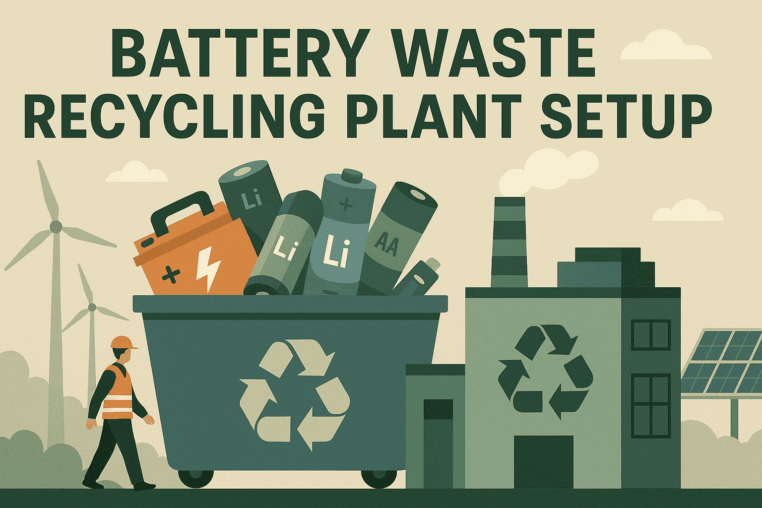In an era where technology is accelerating faster than we can measure, the silent cost is the waste it leaves behind especially batteries. From electric vehicles and consumer electronics to solar energy storage systems, the demand for batteries has skyrocketed. But with every surge in usage comes an equally pressing challenge: disposal and recycling.
The concept of a battery waste recycling plant setup is no longer a niche industrial venture. It’s quickly becoming a cornerstone of sustainable innovation, supply chain resilience, and strategic investment in the green economy.
The Supply Chain is the New Sustainability Battleground
Modern businesses are not judged solely by what they produce, but also by how they manage what’s left behind. Batteries, while critical to innovation, contain materials like lithium, cobalt, lead, and nickel resources that are finite, valuable, and often geopolitically sensitive.
A battery waste recycling plant setup allows businesses to take control of their own material cycles. By reclaiming valuable metals from used batteries, companies are not only reducing dependence on mined raw materials but are also insulating themselves from future price volatility and regulatory risks.
The goal isn’t just to recycle. It’s to reclaim autonomy.
Waste is a Missed Opportunity Waiting to Be Rescued
For decades, battery waste was treated as hazardous material to be discarded with caution. Today, it is viewed as a treasure trove of recoverable value. With the right infrastructure and processes, each used battery becomes a source of critical raw materials ready to re-enter the manufacturing loop.
This is where a modern battery waste recycling plant setup steps in—not simply as a disposal unit but as an engine of value recovery. The process goes far beyond shredding and separation. It involves advanced material recovery techniques, chemical extraction, and closed-loop engineering that makes waste a circular input, not an endpoint.
It’s not just recycling. It’s re-engineering resource flow.
The Strategic Role of Localized Recycling
As global supply chains become more fragile, nations are pushing for localization of critical infrastructure. Battery recycling plants are part of that push. Establishing domestic battery waste recycling capabilities ensures supply security for rare materials, supports local manufacturing, and reduces reliance on imports from politically unstable regions.
For businesses, this represents more than a patriotic obligation. It’s a strategic advantage. Local recycling reduces transportation costs, shortens lead times, and enables faster compliance with extended producer responsibility (EPR) targets.
In short, a battery waste recycling plant setup offers more than environmental alignment—it offers logistical agility and market proximity.
Innovation Is Driving a New Recycling Economy
The modern recycling facility is no longer a grimy backend operation. It’s an innovation hub, driven by chemistry, data, and automation. Whether it’s hydrometallurgical processing, direct cathode recycling, or AI-driven sorting systems, today’s plants are built to maximize yield and precision.
Investing in such a facility isn’t just an act of environmental stewardship. It’s a declaration of technological intent.
These plants are now being designed to not only meet today’s lithium-ion needs but to adapt to next-generation batteries from solid-state cells to sodium-ion formats. This level of flexibility ensures that your infrastructure does not become obsolete as battery chemistry evolves.
Compliance Today, Leadership Tomorrow
Regulatory frameworks like India’s Battery Waste Management Rules, 2022, mandate that producers and importers take responsibility for the end-of-life management of batteries. This means the businesses that move early to set up recycling capacity are not only ahead in compliance but also in influence.
Early movers in the recycling space shape industry norms, earn first access to government incentives, and build long-term credibility in a market that increasingly values transparency and traceability.
What was once a legal obligation is now a leadership opportunity.
Conclusion:
A battery waste recycling plant setup is not just a backend operation it is a front-line initiative that will define who leads in the age of energy transformation.
The companies that reclaim their waste reclaim their future.
If you’re ready to build infrastructure that’s both environmentally sound and commercially intelligent, Corpseed is ready to guide your journey every step of the way.





